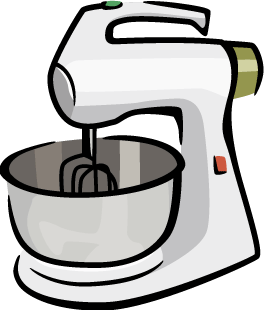Culinary Kid Safety Guide
 Have you ever wanted to help out in the kitchen, or even cook your own meals entirely? Cooking is actually a lot of fun and it’s a great way to get creative. However, it is very important to know all about kitchen and food safety so that nobody becomes sick or gets hurt. By being careful, we can have even more fun cooking in the kitchen! In this article, we’ll talk about how to get started, along with the different types of hygiene and safety regarding yourself, food, and hazards like heat.
Have you ever wanted to help out in the kitchen, or even cook your own meals entirely? Cooking is actually a lot of fun and it’s a great way to get creative. However, it is very important to know all about kitchen and food safety so that nobody becomes sick or gets hurt. By being careful, we can have even more fun cooking in the kitchen! In this article, we’ll talk about how to get started, along with the different types of hygiene and safety regarding yourself, food, and hazards like heat.
Getting Started
The first thing to do before heading into the kitchen is to decide on a recipe. Get a recipe book, or look for kid-friendly recipes online. There are plenty out there! After picking one, make a shopping list to ensure that all the ingredients you'll need are in the kitchen before cooking. Wash your hands and clean the work area. If your cooking style is a bit messy, it might help to lay down some newspaper on the counter.
Hygiene in the Kitchen
Before touching any food, we must always wash our hands. Make sure to do it properly, scrubbing for a while with enough soap and warm water. Fresh fruits and vegetables should also be rinsed with water. Raw meat and eggs can sometimes have bacteria on them. For this reason, after we handle either of these, we should always wash our hands again, and also wash any tools, dishes, or chopping boards that touched the raw meat or eggs. After processing raw meat, never use the same tools for other foods. These practices will help you avoid the chances of becoming sick due to bacteria. A very useful tool is a meat thermometer. This is a thermometer that measures the temperature of meat. It helps us to know when the meat is fully cooked so that we don’t get sick from eating raw meat. To use it, simply push the thermometer into the center of the piece of meat and wait a few seconds to see the reading on the gauge.
Kitchen Safety
Now that we know how to handle food properly, it’s time to take a look at using cooking tools. Sharp tools can be quite dangerous, so it’s always best to have an adult around to help. When cutting or chopping, hold the knife by the handle and cut away from your body instead of towards yourself. When it’s time to wash the sharp tools, wear rubber gloves and be very careful. Hold sharp objects by their handles and don’t touch the blades with your hands. Keep the same rules in mind when it comes to food processors, since they have sharp blades inside. Be sure not to put your hands and fingers inside the processor since they can become stuck or hurt.
Handling Heat
There are many items in the kitchen that create heat and can be fire hazards. Can you think of some? A few include the stove, oven, toaster, kettle, and microwave. Wearing oven mitts is an excellent way to protect our hands when handling hot items. To set down a hot item, use a trivet or a hot pad. These will help to protect the table surface from burning. If there is a hot surface, like a stove top, don’t lean over it or go too close. Also make sure to keep flammable items like paper or fuel away from hot areas. It always helps to stand on a sturdy stool to ensure that you can reach items easily and avoid spilling.
Basic Skills
Cooking involves a lot of different skills. We can combine these skills to create new and different types of dishes. Some basic skills include stirring, peeling, chopping, and beating. There are also other skills such as folding, measuring, simmering, and steaming. The best way to get started is to try out a few basic skills. Once you are comfortable with these, try moving on to harder skills. Ask an adult to show you how to do these new skills, or check out some kid tutorials online. A common way in which most people learn cooking skills is simply by trying out different recipes. As the recipes become more difficult, people start to learn new skills too. If a dish doesn’t turn out perfect the first time, don’t be disappointed! Even the best chefs in the world experience this at some point. The important thing is to figure out what went wrong, and then try the recipe again.
Culinary Specialties
International Cuisine
- Chinese Cooking Schools
- French Cooking Schools
- Italian Cooking Schools
- Japanese Cooking Schools
- Thai Cooking Schools
Specialty Schools
- Pastry Schools
- Vegetarian Cooking Schools
- Weekend Cooking Schools
- Kids Cooking Schools
- Cooking School Vacations
Online Options
Culinary Training
Top Schools
- Culinary Arts Schools
- Le Cordon Bleu
- The Art Institutes
- Kitchen Academy
- Johnson and Wales
- International Culinary Center
Majors
- Culinary Majors
- Culinary Arts
- Baking & Pastry Arts
- Food Prep/Prof. Cooking
- Hotel & Restaurant Management
- Culinary Arts Management
- Wine, Spirits & Beverage Management
